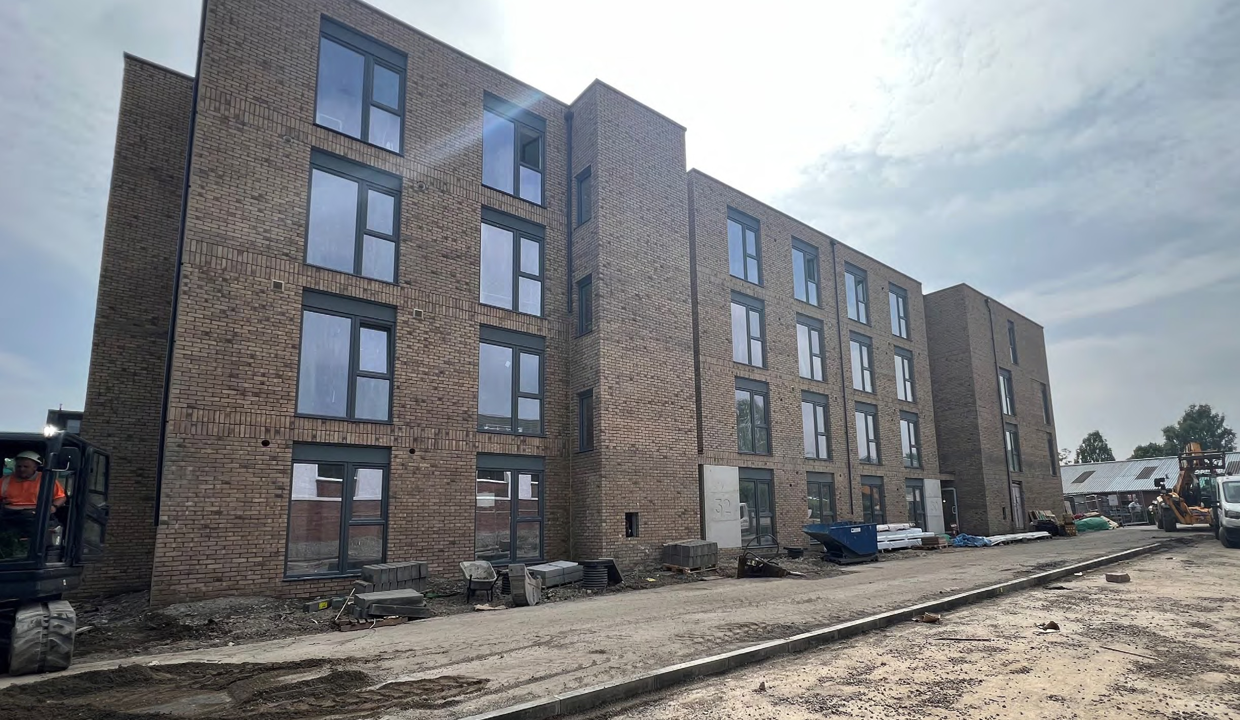Strategic Housing Investment Plan 2026/27 – 2031/32
1. Introduction
1.1. All Scottish local authorities are required to prepare and update an annual Strategic Housing Investment Plan (SHIP).
The core purpose of the SHIP is to set out strategic investment priorities for affordable housing over the five year period 2026/27 to 2031/32, and outline how the Council and its partners will deliver these priorities. The SHIP is complementary to the East Dunbartonshire Local Housing Strategy (LHS) which has the core purpose of meeting the varying housing requirements of residents across East Dunbartonshire. The current LHS covers the period from 2023 – 2028.
1.2. The SHIP sets out how investment in affordable housing will be targeted to meet the objectives of the LHS, focussing on prioritisation and deliverability. A key objective is to increase the supply and quality of affordable housing that will enable people to successfully access suitable housing in their community and tenure of choice.
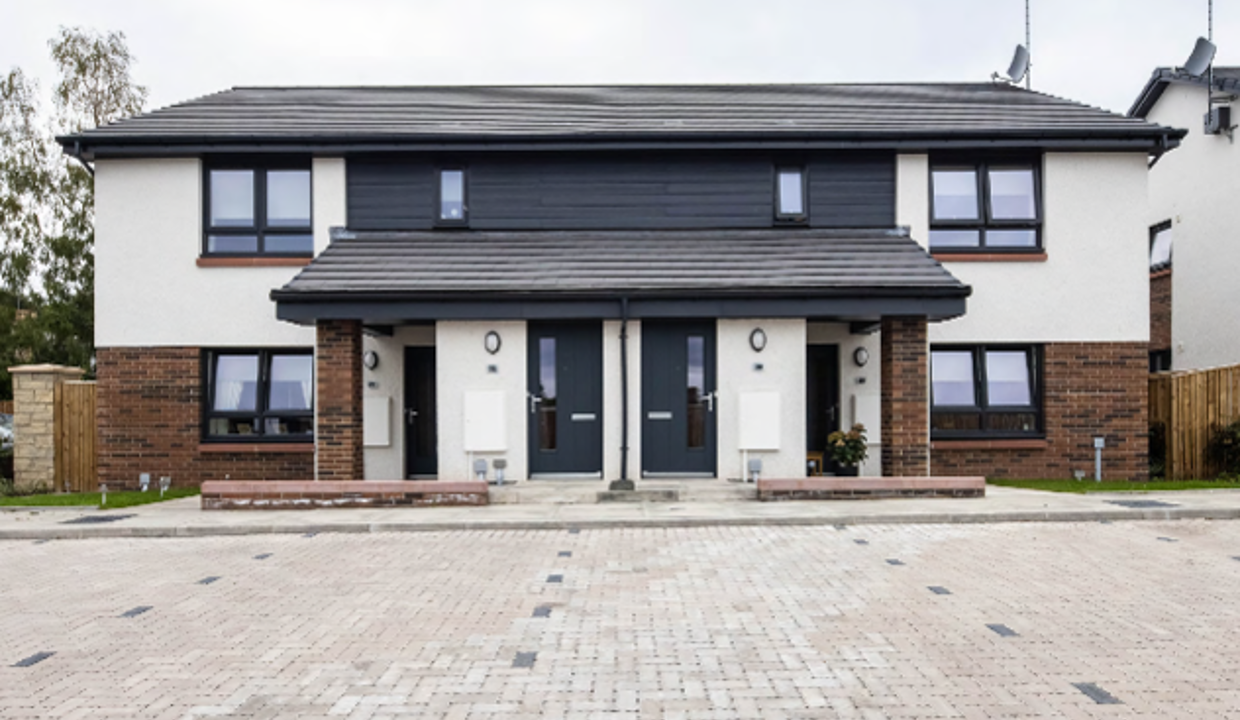
2. East Dunbartonshire Local Housing Strategy
2.1. The Local Housing Strategy (LHS) is the vehicle for delivering national priorities of increasing housing supply across all housing tenures. The LHS sets out the strategic direction for the Council and its partners to tackle housing related issues within East Dunbartonshire over a five-year period. The LHS covers the period
2023-2028 and takes account of national and local priorities, housing need related evidence and resource implications. The Council monitors the LHS and the delivery of the agreed Action Plan on an annual basis.
The LHS vision is:
Everyone in East Dunbartonshire will have access to a climate-friendly, affordable, good quality home which connects to communities and promotes health and wellbeing.
To address this, the following four strategic priorities have been identified:
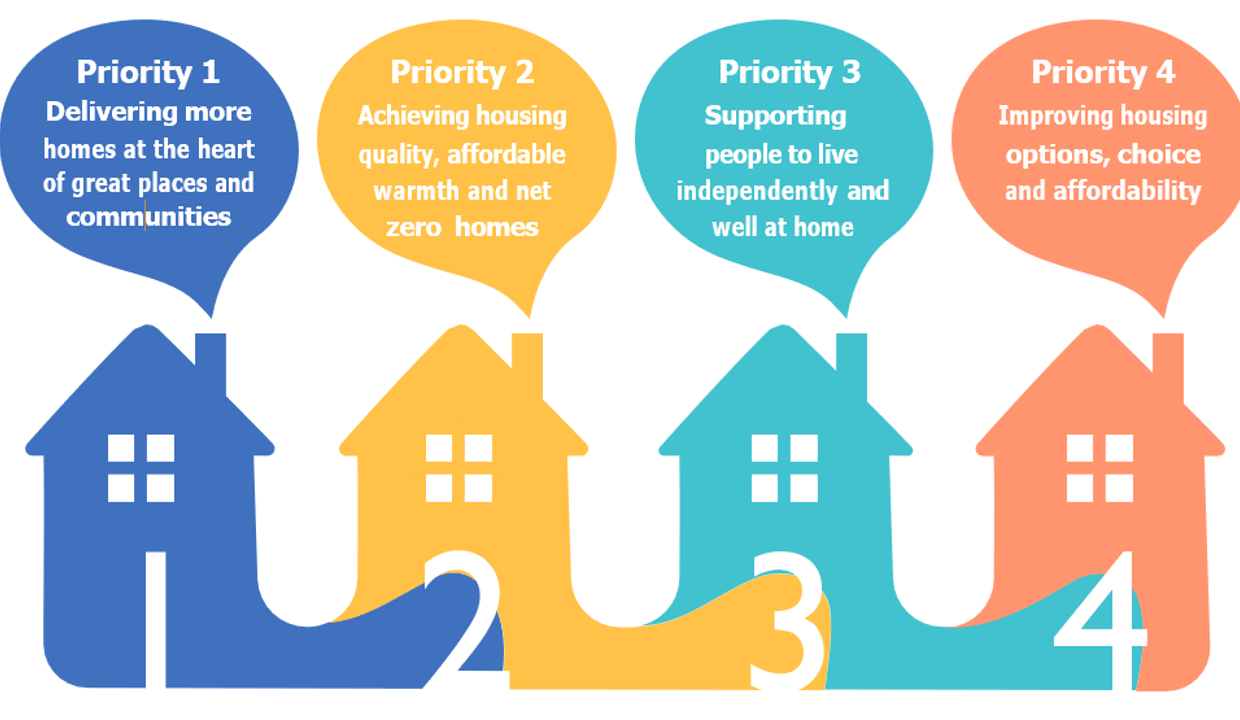
2.2. Each of the LHS priorities has a series of actions that drive activities to address housing system imbalances in East Dunbartonshire. LHS has set an annual Housing Supply Target (HST) for East Dunbartonshire of 245 units per annum with a target of 95 affordable housing dwellings per annum and 150 market dwellings per annum. The LHS target is linked to the Housing Need and Demand Assessment and covers a 10-year period. The Centre for Housing Market Analysis (CHMA) appraised HNDA3 as robust and credible in June 2024.
It should be noted that, as a result of the Planning (Scotland) Act 2019, a Minimum All Tenure Housing Land Requirement (MATHLR) is set for each authority area in the National Planning Framework (NPF).
2.3. NPF4 was published by the Scottish Government in February 2023 and states that the Local Development Plan must exceed the MATHLR through the setting of a Local Housing Land Requirement (LHLR). The next LDP for East Dunbartonshire therefore is required to provide supply of land to accommodate the delivery of a minimum of 250 dwellings per year, for 10 years. Therefore, the Housing Supply Target may require to be amended during the lifetime of the LHS.
2.4. The Local Housing Strategy will be monitored and reviewed on an annual basis. Outcomes and successes will be conveyed through the publication of annual Local Housing Strategy updates.
Table 1 - Housing Supply Targets (LDP)
| Target | Private | Affordable | All-Tenure |
|---|---|---|---|
|
Final Housing Supply Target per annum for East Dunbartonshire |
150 |
95 |
245 |
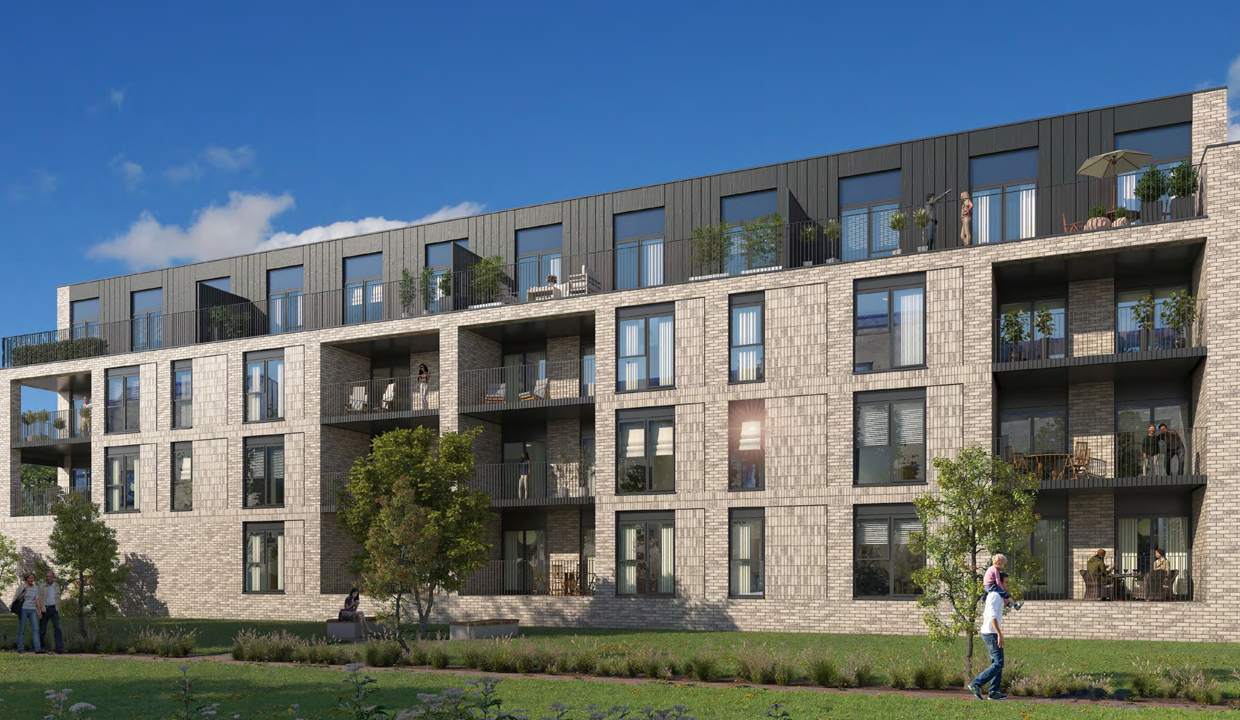
3. Local Development Plan and Affordable Housing Policy
3.1. The Council adopted Local Development Plan 2 (LDP2) in 2022 which replaced Local Development Plan 1 (LDP1) (adopted in 2017). LDP2 sets out the Council’s long-term land use strategy, planning policies and identifies sites for development and protection. Council officers identified a range of sites to be included within LDP2 for affordable housing provision and undertook feasibility studies of each site to determine viability for these housing development sites.
3.2. LDP2 continues the established affordable housing requirement of a 25% on-site developer contribution towards affordable housing for all new developments with 10 or more homes; and an equivalent commuted payment to be sought from developments of between two to nine homes. Specific guidance on the provision of affordable housing is incorporated into the main LDP2 document within guidance on Design and Placemaking.
3.3. Whilst the affordable housing policy remained unchanged for LDP2, additional criteria regarding the design of housing was introduced, as follows:
- Developments of all tenures must provide wheelchair and accessible housing, the detail for which is included within the Design and Placemaking Supplementary Guidance. Specifically, the guidance sets a threshold that 5 - 10% of all tenures on site should be provided as wheelchair and accessible housing (however the preference is for 10%)
- In the case of sites within 400m walking distance of town and village centres (including also Lenzie local centre), and where they are 10 units or more in total, a minimum of 25% of the units on site will be provided as smaller housing of no more than two bedrooms that are accessible without stairs (for example ground floor flats and flats with lift access).
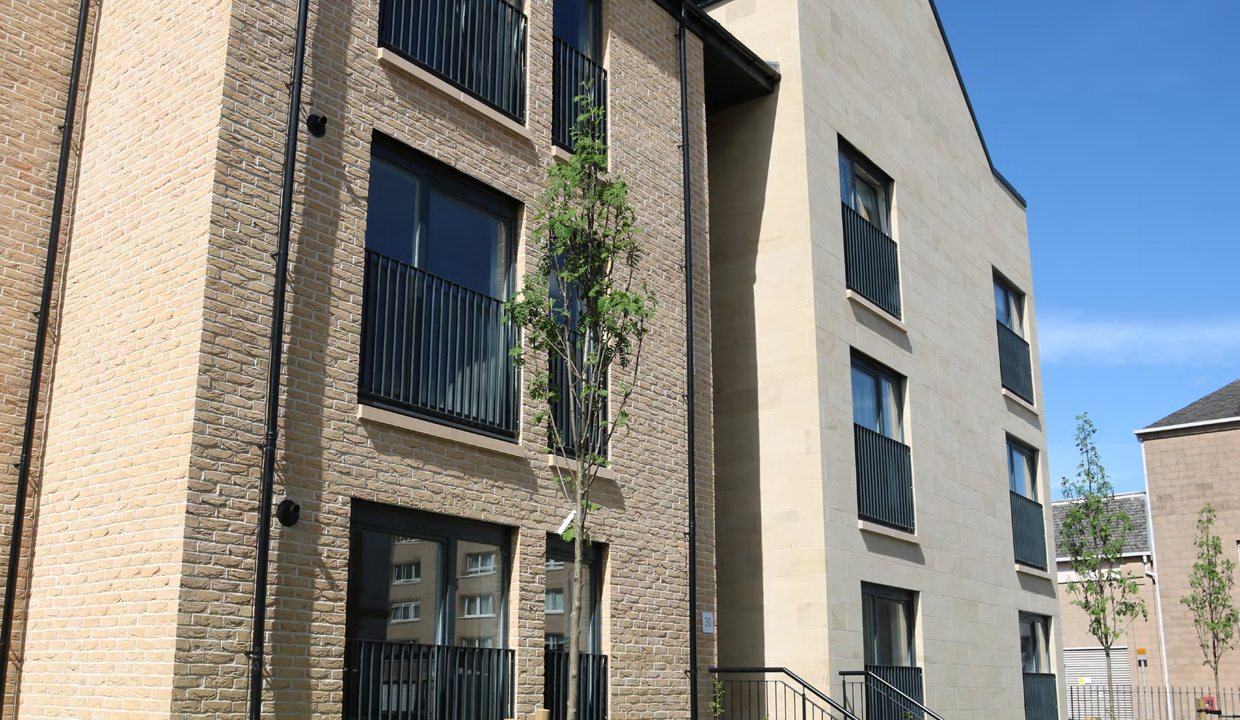
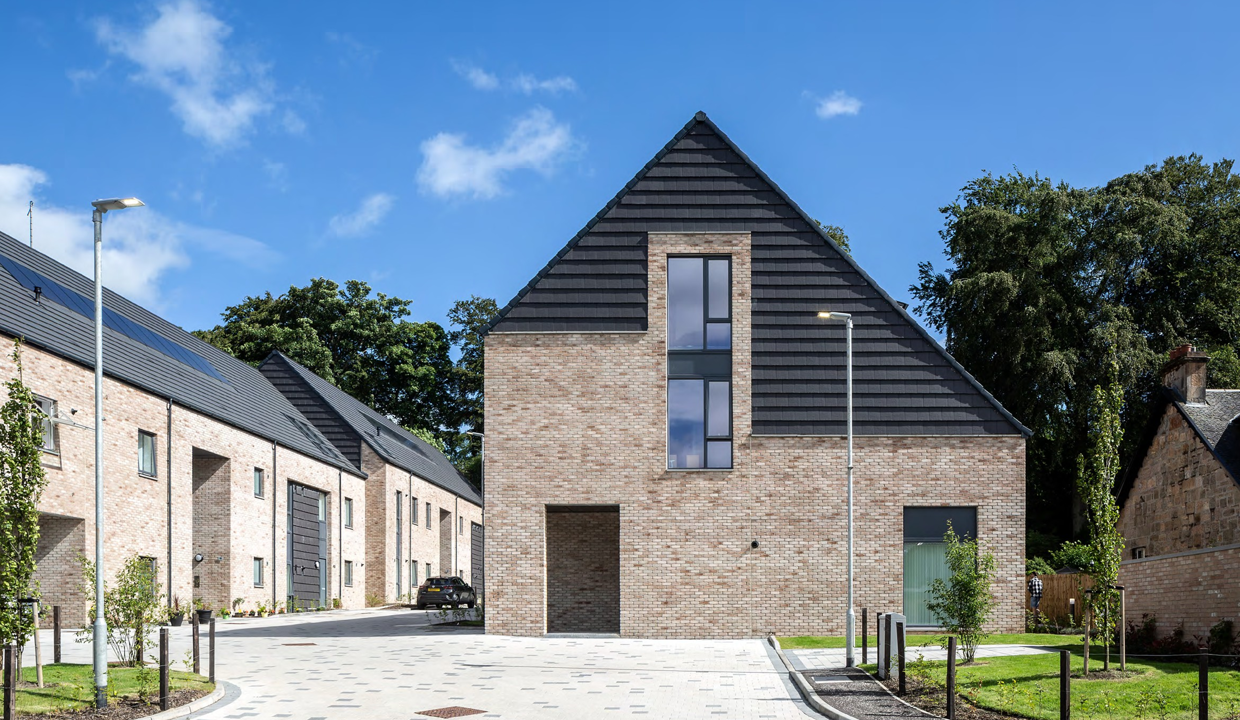
3.4. Work on the next Local Development Plan (LDP3) is now underway. The new-style LDP will encompass a 10-year plan period, looking 20 years ahead, and will guide new development to meet the environmental, social, economic and housing needs of East Dunbartonshire up to 2038.
3.5. Under the new approach to LDP preparation brought about by the passing of the Planning (Scotland) Act 2019, the first key stage is the drafting of an Evidence Report. The purpose of the Evidence Report is to ensure that the Council has sufficient information with which to proceed with preparation of the Plan. This will improve the quality and effectiveness of a Proposed LDP through the provision of a range of data captured from a wide variety of sources, analysed to best inform the production of LDP content and strategy. On 19 June 2025, the LDP3 Evidence Report was approved at a meeting of the Council. It was subsequently submitted to Scottish Ministers for independent review – known as a Gate Check Review – in early July 2025.
3.6. It is anticipated that the Gate Check will take up to three months to complete. In the meantime, a public call for ideas/sites has been launched, during which time suggestions for the content of the Proposed LDP has been sought as well as the submission of housing and other sites to be considered for allocation in the plan. Following public consultation, examination by a Scottish Ministers-appointed reporter of the Proposed Plan is expected to conclude in late 2027, with the adoption and publication of LDP3 set for 2028.
3.7. The new LDP will incorporate all local planning policy on affordable housing provision, the precise content of which has yet to be determined but which is expected to take into account the criteria relating to wheelchair and accessible housing and proximity to centres as set out in section 3.3 above. LDP3 will also set out an appropriate policy approach relating to housing for older people and specialist housing. This will reflect the outcomes of independent research commissioned by the Council and Health and Social Care Partnership on the housing issues facing the growing population of older people in East Dunbartonshire, including policy and delivery solutions needed to meet such housing need at a local level.
4. East Dunbartonshire Housing Context
4.1. The key affordability issue in East Dunbartonshire continues to be high house prices. Owner occupation is the predominant tenure in East Dunbartonshire, at 81% of the overall housing stock. House prices in the owner occupied sector remain high. According to the UK House Price Index Scotland, the average house price in East Dunbartonshire was £259,103 in May 2025, compared to the Scottish average of £191,927, a variance of 30%. East Dunbartonshire has the fifth highest average house price in Scotland of all Scottish local authorities. Only Edinburgh, East Lothian, Midlothian and East Renfrewshire Councils have higher house prices on average.
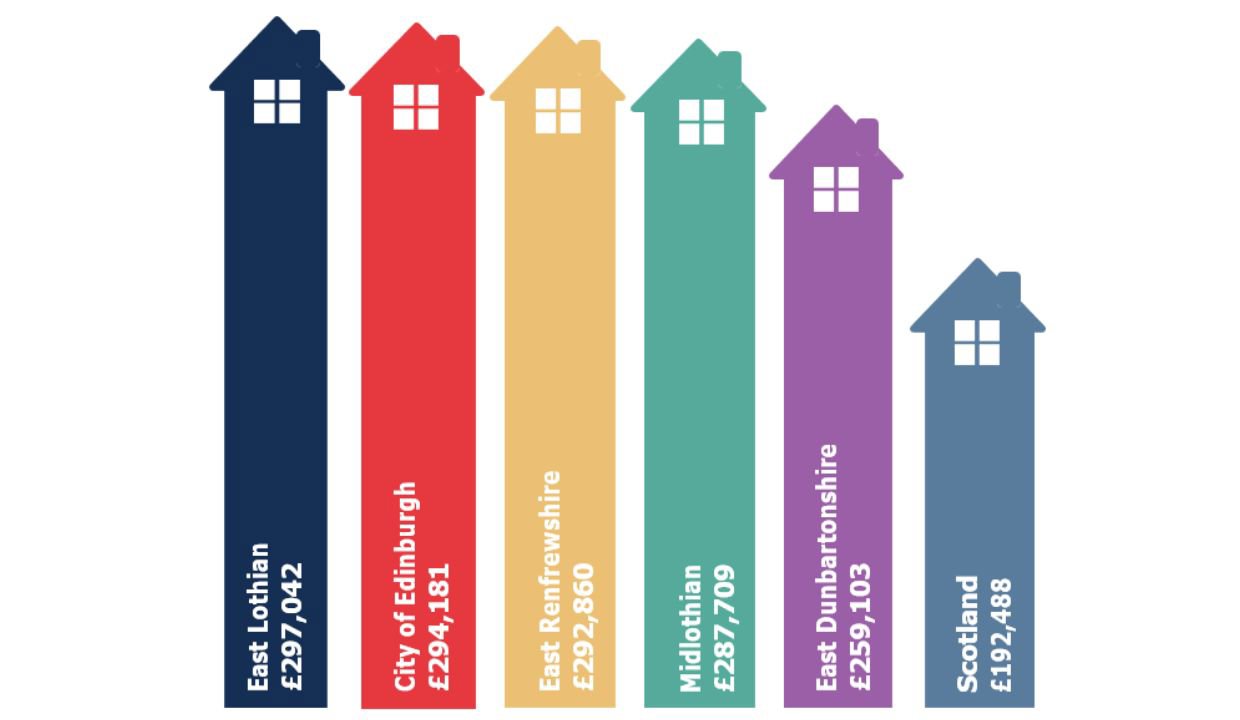
4.2. NOMIS suggests that the median gross earnings in 2024 for individuals working full time was £44,694 in East Dunbartonshire, higher than the Scottish average of £38,480. This means that an individual on a median income would need to borrow a multiple of around six times their salary to afford an average
property in the area. Therefore, there are limited affordable housing options provided by the market for residents of East Dunbartonshire on a modest or low income.
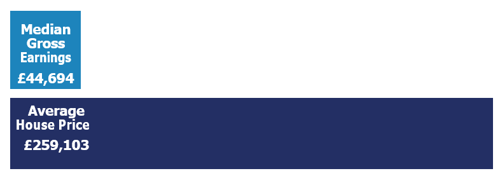
5. Demand for Affordable Housing
5.1. East Dunbartonshire covers nine settlement areas, as seen in Table 2. As of April 2025, the Council had circa 2600 applicants on the Housing List with a housing stock of just over 3900 properties. Demand for each settlement area is shown in Table 2 below.
Table 2 - First Choice of Housing –– Demand and Stock by Area and Size (April 2025)
Note: The Council’s Housing IT system has changed since 2024. The previous system recorded applicants first preferred choice only whereas the new IT system gives all selected choices. Consequently, the numbers of applicants appear higher but this new method provides a more accurate account of housing need and demand.
**Hillhead Housing Association is the main housing provider in the Hillhead area of Kirkintilloch and operate their own housing list. The Association has reported that housing demand for their stock remains strong. The above figure is therefore likely to under represent housing demand for this area.
5.2. Of the overall housing waiting list, the highest level of demand is for Bearsden and Bishopbriggs. Of the villages, Torrance has a high level of demand although the figures may be slightly skewed because of the relatively low stock as a starting base. In particular, the Bearsden and Milngavie market area generally has a limited supply of affordable housing, partly due to the limited extent of land ownership by the Council on which affordable housing might be built. Table 2 also illustrates the acuteness of demand for one-bed properties across all localities in East Dunbartonshire, but most particularly in Torrance.
6. House Sizes
6.1. Of all applicants presently on the Council’s housing list, just over 50% require a one bed property; around a quarter require two beds and 15% require three beds, as illustrated in Table 2. There appears to be lesser demand for larger four and five bed properties at 6%, with the exception of Bishopbriggs, Bearsden and Kirkintilloch which have much higher demand for larger properties compared to supply. Although the demand for larger units may be lower than demand for smaller homes, there is still a real need to provide larger homes to meet the needs of families living in East Dunbartonshire. The turnover of larger properties is low compared to turnover of smaller properties.
6.2. In view of the above, East Dunbartonshire requires a mix of all property sizes. The Council’s Housing List indicates that one bed properties are in greatest need. Nevertheless, building a high proportion of one bed properties will not give East Dunbartonshire the flexibility to meet people’s varying housing needs in-situ or create a mixed sustainable community.
6.3. The target percentages for each size are suggested at Table 3. However, this may need to vary to take cognisance of individual circumstances, client group, location and management issues.
Table 3 – Target Percentage Mix
| Property size | Target percentage |
|---|---|
|
1 bed |
25% |
|
2 bed |
50% |
|
3 bed |
20% |
|
4/5 bed |
5% |
6.4. The Council’s New-Build Affordable Housing Programme anticipates a mix of one bed 39%, two bed 41%, three bed 19%
and four bed 1%.This target mix generally complements identified housing demand trends although it may be noted that the target and proposed number of two- bedroomed homes being built
as part of the Council’s housing programme is higher than current demand indicates. The
higher proportion of two-bedroomed units will allow some tenants to remain in their homes even if their circumstances change, such as an increase in family size. The Council will continue to use its Open Market Purchase scheme to acquire larger four or five bedroomed homes to meet housing need and demand where possible as this provides good value for money and can more easily meet immediate demand.
7. Homelessness and the Rapid Rehousing Transition Plan
7.1. The Scottish Government issued Guidance on ‘Rapid Rehousing Transition Plans’ (RRTP) in late 2018 following recommendations from the Homeless and Rough Sleeping Action Group. Funding has been allocated by the Scottish Government to support local authorities’ transition to Rapid Rehousing.
7.2. Each local authority is required to develop their plan in collaboration, over a planned and costed phase of seven years (2019/20 to 2025/26) and is an integral part of the Strategic Housing Investment Plan (SHIP). The RRTP will end in March 2026, and the Council looks forward to working with the Scottish Government on any new Plan that will be put in place to help eradicate homelessness in East Dunbartonshire.
7.3. A key aim of the RRTP is to reduce the waiting time on the homelessness list, and the Council and RSLs have had some success in meeting this aim. At the start of 2019/20, 25% of applicants had been awaiting an offer of settled accommodation longer than three years. Since 31 March 2022, no homeless households have waited longer than three years to receive an offer of permanent accommodation.
7.4. A key aim of the RRTP is to prioritise the needs of homeless households to enable them to access affordable housing by targeting that a minimum of 50% of total allocations are made to homeless households by social landlords. During 2024/25, 90 homeless households were housed by the Council which accounts for 53% of the total 169 lets made by the Allocations Team. A further 53 households were allocated a home by an RSL through the nominations process. Of these, 34 were offered to applicants who had been assessed as homeless which accounts for 64%.
7.5. To further promote RRTP principles to reduce the waiting time on the homelessness list for larger families, one temporary accommodation property was converted from temporary accommodation to mainstream accommodation for an existing household. The amount of conversions to mainstream accommodation reached a peak of 27 during the previous year of 24/25 due to a reduction in the number of temporary accommodation placements identified for that year. During 2025/26, nineteen households were also assisted to move to accommodation in the private sector via the Rent Deposit Guarantee/Private Sector Scheme.
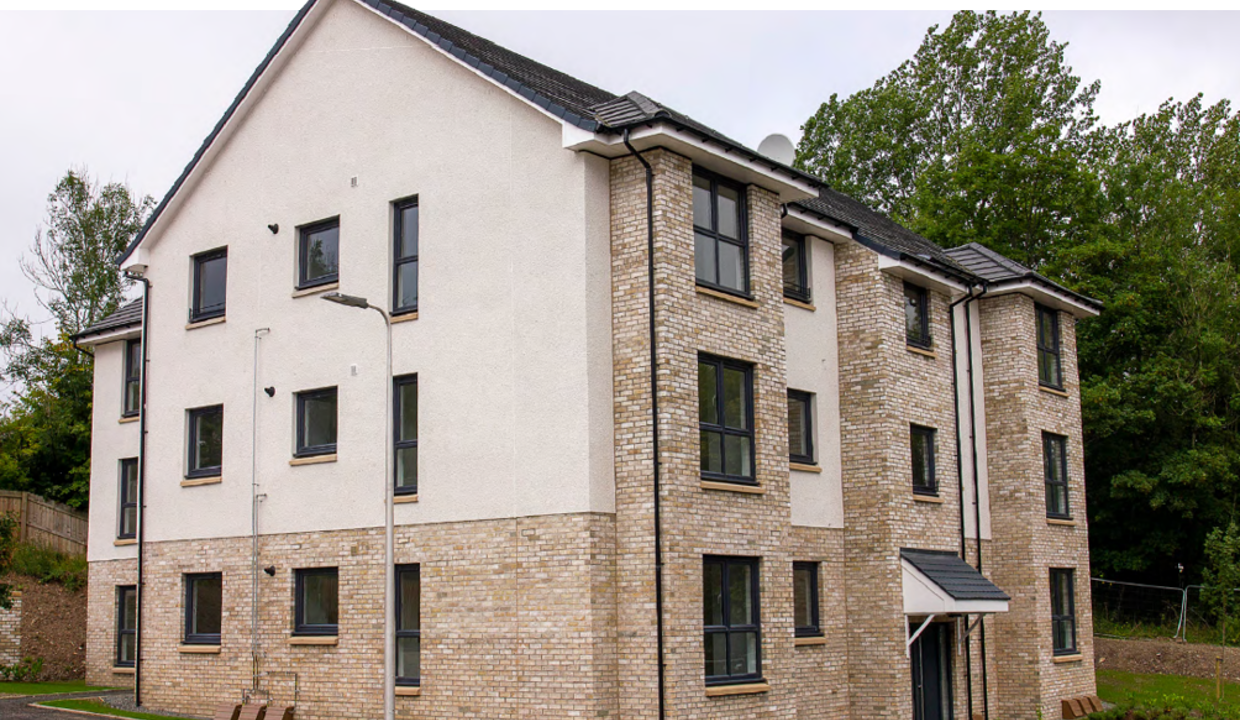
New Build Contribution towards RRTP
7.6. New build housing provision has made a significant direct contribution towards alleviating homelessness since the establishment of the RRTP.
7.7. As part of the ongoing commitment to help households experiencing homelessness, a target of 20% for houses and 35% for flats of new let allocations for those experiencing homelessness has been applied to new build housing developments in East Dunbartonshire. Table 4 highlights that over the last few years a significant number of both RSL and Council new build properties were allocated to applicants assessed as being homeless or threatened with homelessness.
New Build Properties Allocated to Homeless Households
2021/22
Housing Provider - Council
- New Build Completions To Date: 88
- Number to Homeless Households: 27.
Housing Provider - RSLs
- New Build Completions To Date: 67
- Number to Homeless Households: 25.
Totals
- New Build Completions To Date: 155
- Number to Homeless Households: 52.
2022/23
Housing Provider - Council
- New Build Completions To Date: 37
- Number to Homeless Households: 18.
Housing Provider - RSLs
- New Build Completions To Date: 63
- Number to Homeless Households: 11.
Totals
- New Build Completions To Date: 100
- Number to Homeless Households: 29.
2023/24
Housing Provider - Council
- New Build Completions To Date: 47
- Number to Homeless Households: 8.
Housing Provider - RSLs
- New Build Completions To Date: 0
- Number to Homeless Households: 0.
Totals
- New Build Completions To Date: 47
- Number to Homeless Households: 8.
7.8. Between 2021/22 and 2023/24 172 Council and 130 RSL new build units have been completed. Of these, 53 Council homes and 36 RSL properties were allocated to applicants assessed as being homeless or threatened with homelessness by the Council. This indicates that 29.5% of all new build lets made during these years were allocated to homeless applicants, which sits within the 20% and 35% target for houses and flats respectively. During 2024/25 there were 20 new build completions by the Council and 0 by RSLs. Of the Council lets, seven (35%) were allocated to households who were assessed as being homeless by the Council. The allocation to homeless families is higher than the target given the properties were all terraced housing/cottage flat types.
7.9. RSL’s have an extensive building programme during the next few years, and 153 social rent and 16 MMR units will complete in 2025/26. These properties have yet
to be let, and the Council will work with the developing RSLs to ensure that a fair number are allocated to applicants who have experienced homelessness.
7.10. The Council aims to allocate approximately half of its own new build properties to transfer list applicants.
When these applicants move, they vacate an existing council home – 50% of these properties are
subsequently let to homeless applicants. As such, the true impact on homelessness amounts to a further 25% of the total no of homes completed, significantly increasing the number of overall lets allocated to homeless households.
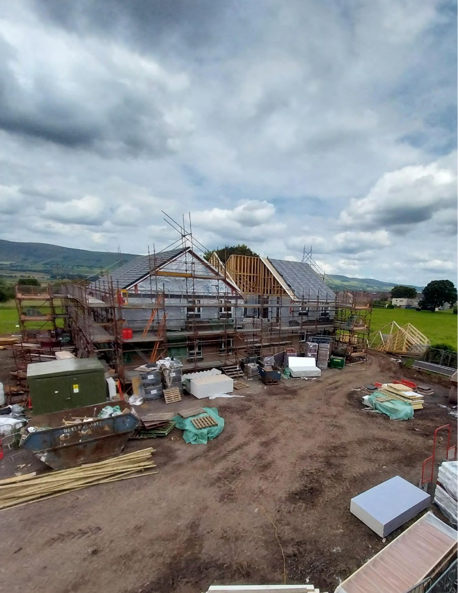
8. Intermediate Housing Types
Shared Equity
8.1. The Council has its own version of the Scottish Government LIFT New Supply Shared Equity (NSSE) scheme, known as Shared Equity Supply Scheme (SESS). The Council’s scheme is based on the same principles as NSSE, however SESS does not receive grant funding. The discount is generally achieved on the differential between the agreed purchase price and the market value. Properties need to be sold at least 20% below the market value to be affordable to lower income households.
8.2. SESS is primarily aimed at first time buyers. However, the Council prioritises applications to ensure that those with the greatest housing need are considered first. This includes:
- People who are homeless or threatened with homelessness and have had a homelessness assessment carried out by the Council
- People with a disability whose current home doesn’t suit their needs
- Residents living in housing that is Below Tolerable Standard
- People leaving the armed forces, or veterans
- People who have experienced a significant change in their circumstances, such as separating households or are subject to mortgage stress.
8.3. Since late 2013 the Council has sold 38 properties under the SESS scheme. The Council has just undertaken research into demand for Shared Equity and MMR (see below) including the administration of these. The continued success of the scheme is dependent upon broader economic conditions. However, it is likely that the Council will continue to promote SESS in current and future housing developments as an affordable housing tenure but in particular areas.
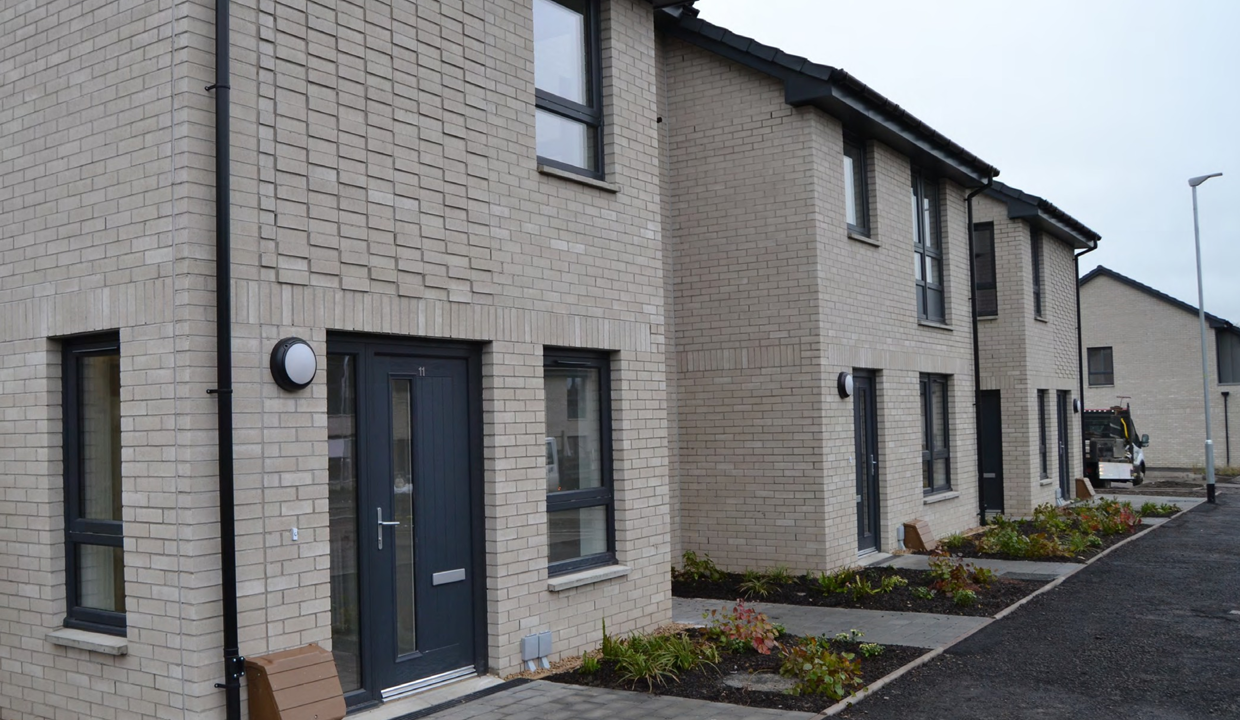
8.4. Mid Market Rent is another form of affordable housing and, to date, has been provided solely through Registered Social Landlords in East Dunbartonshire. Tenants generally pay a lower rent than the area’s market rent level, but more than local social housing rents. Starting rents for new Mid Market Rent homes are often similar to the Local Housing Allowance. Mid Market Rent might be suitable for people on incomes that are not quite enough to afford home ownership, or private sector rents. These properties generally come with floor coverings, blinds, and white goods. The research mentioned above has identified localities where MMR would work best. The Council will work with the RSLs to promote Mid Market Rent developments in these locations.
Open Market Shared Equity Scheme
8.5. The LIFT Open Market Shared Equity Scheme (OMSE) is administered by Link Housing Association on behalf of the Scottish Government. The scheme is similar to NSSE and SESS in that it allows eligible applicants to purchase a home at a discounted rate so that it is affordable to them and suitably meets their needs. The fundamental difference is that OMSE allows residents to purchase existing/second hand homes in the open market, while NSSE and SESS specifically relate to new build provision. The Council promotes the scheme to applicants who indicate an interest in shared equity properties.
8.6. All applicants who complete the Common Housing Register (CHR) application form for housing are asked if they have an interest in intermediate housing options. Table 5 highlights potential demand from housing list applicants as at August 2025 for intermediate housing options which shows a reasonable demand for all types.
Table 5 - Intermediate Housing Demand
| Tenure type | % of applicants stating an interest (2025) |
|---|---|
|
Shared Equity |
17% |
|
Open Market Shared Equity |
11% |
|
Mid Market Rent |
33% |
|
Shared Ownership |
18% |
9. Open Market Purchases
9.1. For a number of years, the Council has operated an open market purchase scheme that has played a pivotal role in increasing affordable housing supply since its implementation, focussed on the purchase of homes in areas of high housing need. Buying on the open market allows the Council to target high demand property types that are difficult to address through new development – such as family homes in Bishopbriggs, Bearsden, Milngavie and Lenzie, where land values and a limited land supply mean the development of new larger affordable homes are less viable. Growing the housing stock also allows the Council to reduce instances of homelessness across the authority. This is demonstrated by the fact that in 2024/25, of all the properties let by the Council through open market purchases, 77% of these homes were allocated to those on the Council’s Homeless list. This is a key priority of the LHS.
9.2. As part of the scheme, the Council also targets the purchase of properties within mixed tenure blocks. This helps the Council meet its Scottish Housing Quality Standard (SHQS) and Energy Efficiency Standards for Social Housing (EESSH) requirements, improving energy efficiency and so helping reduce fuel poverty. During the period 2016/17 to 2024/25, there were 123 open market purchases, and to date there have been 19 properties purchased in 2025/26 which has had a positive impact on meeting housing need in the local authority area.
Empty Homes
9.3. The number of reported empty private sector homes within East Dunbartonshire remains relatively low. Despite the low numbers, officers are seeking to address the issue, which is considered a wasted resource and which can have a negative effect on neighbouring communities. The current lack of power for Councils to tackle empty privately-owned homes is also an issue and the Council is keeping up-to-date with any new legislation that may be on the horizon, for example the introduction of Compulsory Sales Orders which would allow the local authority to force the sale of empty homes to enable them to be brought back into use.
9.4. Currently the Council does not have an Empty Homes Strategy but with the increased focus on this area of work, the intention is to work towards establishing a strategy as soon as possible. The Scottish Empty Homes Partnership has provided support and training to officers with a view to implement a more proactive approach to reducing the number of empty homes. In addition to providing tailored advice and resource signposting to property owners, improvements have been made to the data sharing systems between departments and the level and type of engagement between officers and empty homeowners. The aim of this increased communication is to obtain an understanding of the reasons for a property being empty and what opportunities exist to bring that home into use again, including available grants or an acquisition by the Council to provide affordable housing where appropriate.
9.5. Over the last three financial years, one long term empty home has been brought back into use through acquisition by the Council during 2025/26.
Housing in Town Centres
9.6. Creating affordable housing within East Dunbartonshire Town Centres is an initiative supported by the Local Housing Strategy, Local Development Plan 2, National Planning Framework 4 and individual Town Centre Strategies. Priority is placed on regenerating existing areas to provide attractive and vibrant town centres where people want to work and live.
9.7. Officers are currently reviewing two possible refurbishment opportunities of Council-owned properties within Kirkintilloch town centre. In addition to this, engagement with the Regeneration Team within the Council is ongoing, with the aim of identifying any suitable vacant or underused sites or properties which have the potential to provide affordable housing.
10. New Build Affordable Housing
10.1. The Council’s Affordable Housing Investment Programme has progressed since the approval of the Housing Capital Investment Plan in February 2025. The plan includes a total of nine sites across East Dunbartonshire and a summary of the programme is provided in Table 6 below. Detailed design progression has allowed planning applications for seven of the sites to be submitted by Summer 2025. Pre-construction activity for the remaining two sites continues to assess options and viability.
10.2. The programme aims to deliver approximately 310 new affordable homes over a five-year period, which will include a variety of flats, cottage flats and houses. The estimated total development value of the programme is £128.184m. Details of the challenges affecting each site are contained within Table 7.
10.3. At the time of drafting, construction is underway of 15 new affordable houses at Twechar Canalside, adjacent to the recently completed Twechar Outdoor Pursuits Centre. In addition to supporting the wider regeneration of the area, the completed houses will be the first of the Council’s development sites constructed to Passivhaus standard.
10.4. The viability of new-build affordable housing development continues to be affected by a range of issues which exist within the social housing sector. Construction costs, increased borrowing costs, reductions in available grant funding and restrictions on rent increases present a challenge to social landlords when assessing site viability. These issues, combined with relatively few available sites within the authority and in some cases, less than favourable site conditions, add strain to the Council’s new-build aspirations. The Council continue to liaise with the Scottish Government and local stakeholders to manage and mitigate risks while promoting the housing development programme.
Table 6 – East Dunbartonshire Council Affordable Housing Development Programme at September 2025
| Phase/Site | No. of Units | Status |
|---|---|---|
|
A1 - Twechar Canalside |
15 |
On site |
|
A - Cleddans, Kirkintilloch |
50 |
Site progressing |
|
A - Auchinairn Primary, Bishopbriggs |
63 |
Site progressing |
|
A - Nithsdale Crescent, Bearsden |
32 |
Site progressing |
|
A - Campsie View Primary, Lenzie |
27 |
Site progressing |
|
A - Main St, Torrance |
12 |
Site progressing |
|
A - Merkland Primary School, Kirkintilloch |
43 |
Site progressing |
|
B - Hunter Rd, Milngavie |
1 |
Possible refurbishment |
|
B - Huntershill, Bishopbriggs |
14 |
Site progressing |
|
C - Glasgow Road |
54 |
Site progressing |
|
D - Derrywood Rd, Milton of Campsie |
43 |
Reserve site to progress |
|
D - Kelvindale Nursery, Torrance |
11 |
Reserve site to progress |
|
D - St Machans Way, Lennoxtown |
2 |
Site rejected |
Future Opportunities
10.6. The identification of future development opportunities is an ongoing priority for the Council’s Development and Investment Service who work closely with stakeholders in identifying potential development sites and refurbishment opportunities.
10.7. Through the LDP3 process an exercise is being undertaken to identify new affordable housing sites. The call for sites process commenced in July 2025. Officers will work with the Planning Service to determine potential sites that may be developed during the plan period.
Affordable Housing Contribution from Private Developers
10.8. East Dunbartonshire Council is also working in partnership with a range of private housing developers and has received 20 social rent homes from Robertson Homes at Thorn Road in Bearsden during 2024/25, and will continue to work with private developers to ensure that the requirements of the Council’s Affordable Housing Policy are met in relation to future housing provision.
Affordable Housing Provision by RSLs
10.9. The RSL sector has also made a valuable contribution to affordable housing supply over the last few years. Since April 2019, RSLs have developed a total number of 266 homes throughout East Dunbartonshire. These comprise 211 homes for social rent, 22 shared equity and 33 Mid Market Rent homes. This healthy tenure mix promotes much needed social rented units as well as desirable intermediate housing options. Additionally, it is anticipated that a further 438 RSL homes will be complete during the lifetime of this SHIP, with a healthy figure of 169 being fully built in 2025/26.
11. Development Constraints
11.1. To be able to deliver affordable housing on schedule, any development constraints require to be identified as early as possible to allow mitigation measures to be planned and adopted if appropriate. Officers have been working with the contractors and consultants to identify and mitigate any constraints within the Council’s Affordable Housing Development programme described above at Section 10.
11.2. Table 7 identifies known constraints and sets out potential resolutions and timescales to ensure that any constraints are resolved by the estimated start date.
12. Supplementary Grant Funding for Affordable Housing Provision
12.1. The Housing Infrastructure Fund (HIF) was launched in 2016 to help RSLs and Councils with grant support for the unlocking of sites that will deliver affordable homes in addition to the Affordable Housing Supply Programme (AHSP) and as in line with local authority strategic priorities.
12.2. East Dunbartonshire Council will investigate opportunities to bid for support from the Housing Infrastructure Fund to progress the development of affordable housing where required.
13. Non-Grant Funding
13.1. The Council has budgeted to invest approximately £128.184m in new affordable housing over the lifetime of the SHIP – for all priorities of site delivery. This includes an outline assumption of around £35.546m of grant funding towards directly contracted new build. A further spend of £20m has been budgeted for open market purchases/ Rental off the Shelf Scheme (ROTS) with a Scottish Government grant contribution of £8.75m.
13.2. The remaining funding for the programme* is comprised of:
- £1.952m of Ring-Fenced Reserves for years 1 and 2
- £102.476m of Prudential Borrowing against the HRA 30-year business plan.
[note that these figures will be subject to review ahead of the Council’s ten-year Housing Capital budget plan in 2026 – date to be confirmed].
14. Council Tax Second Home Discount
14.1. New legislation in April 2024 means that second and empty homes are now liable to 200% Council Tax compared to a previous discount of 10%. In previous years, additional funding from this reserve has been made available to support the delivery of affordable housing to maximise provision.
14.2. The funds generated from Developer Contributions and from Council Tax Second Home Discount are held in reserve and applied selectively on a site-by-site basis in order to support the viability of new build development projects.
15. Affordable Housing Standards
15.1. The development of any new rented homes in East Dunbartonshire will be built to comply with the applicable Building Regulations and will include all the ‘Housing for Varying Needs Standards’ essential features as set out by the Scottish Government’s Guidance. In parallel with the Council’s Affordable Housing Development Programme, a Design Guide was completed in 2022. These provide the standards, policies and regulations that East Dunbartonshire Council expect in their new affordable housing and in any refurbishment projects. A set of Authority Construction Requirements are being developed as we work through the next detailed design stage and will sit alongside this Design Guide
15.2. All new development set out as part of the SHIP, will adhere to new core standards in relation to such aspects as automatic fire suppression systems and carbon free heating systems. The Council will also actively promote new standards, where appropriate, around home working space, EV charging points and balconies in those instances where open space is not possible, and the approach is supported by Planning Policy.
15.3. The Council have engaged two contractors with two design teams to deliver the Affordable Housing Development Programme as mentioned previously. There is collaboration and-sharing of ideas over efficient methods of construction practise amongst other construction issues.
Sustainable Development
15.4. The Council and RSLs are committed to targeting the development of sustainable, zero carbon homes where this meets the twin aims of reducing fuel poverty and carbon emissions. There are two recent statutory requirements which support this commitment:
- The Building (Scotland) Amendment Regulations 2023
This prohibits the use of direct emissions heating systems in new buildings applying for a building warrant from 1 April 2024 - The Heat Networks (Scotland) Act 2021
Local authorities are required to identify potential areas for Heat Network Zones (HNZs). Through the development of the Local Heat and Energy Efficient Strategy (LHEES) consideration will be given for new affordable housing sites to be part of a wider Heat Network Zone.
15.5. The Scottish Government’s Strategy document Housing to 2040 sets out a vision for housing in Scotland to 2040 and a route map to get there. It aims to deliver our ambition for everyone to have a safe, good quality and affordable home including that all new homes delivered by RSLs and Local Authorities to be zero emissions by 2026. All new homes delivered with grant funding through the Scottish Government More Homes Affordable Housing Supply Programme (AHSP) from 1 December 2023 will be prohibited from installing direct emissions heating systems.
Delivery partners will promote sustainable design, energy efficiency measures and renewable heat and energy technologies in all new affordable homes. New development will take account of the most relevant standards and guidance, as well as the Climate Change (Scotland) Act 2009. This work will be informed by the:
- Local Housing Strategy (LHS)
- Climate Action Plan (CAP)
- Local Heat and Energy Efficiency Strategy (LHEES)
- Testing of options through the market as part of the Affordable Housing Development Programme.
15.6. This is reflected in the LHS framework through actions and activities of ‘Priority 2: Achieving housing quality, affordable warmth and net zero homes.’ The key actions and commitments by local partners for LHS Priority 2 seek to address and eradicate fuel poverty.
15.7. The Council’s own Affordable Housing Development Programme is being designed to achieve Passivhaus standard. In relation to this the Council has developed a Standard House Type which will accommodate the Housing for Varying Needs (HfVN) space standards as well as the requirements for new technologies in relation to the use of no direct emissions heating, renewables and Passivhaus design.
15.8. Through East Dunbartonshire’s Local Heat and Energy Efficiency Strategy (LHEES), a feasibility study is being undertaken in relation to a Heat Network in Kirkintilloch town centre. The study will consider whether existing and future affordable housing projects could be linked to a heat network, which could lower energy bills for tenants.
Design and Placemaking
15.9. The Scottish Government’s design policy is set out in Designing Streets and Creating Places. The Council implements the principles set out in these documents through its own LDP2 policy, Design and Placemaking (Policy 10), which promotes distinctive, safe and pleasant, easy to move around, welcoming, adaptable, and resource efficient places.
15.10. New-style LDPs (see section 3.5) must encompass all local statutory planning guidance of applicability for the determination of planning applications, meaning that it will no longer be possible to publish separate statutory guidance to support the new LDP. With particular relevance to the determination of housing applications, it is anticipated that the content of the current Design and Placemaking Supplementary Guidance will be updated and incorporated into LDP3 where appropriate to help to improve the outcomes of the design and application processes.
Local Living and 20-Minute Neighbourhoods
15.11. The Scottish Government has committed to the concept of 20-minute neighbourhoods through the Programme for Government and National Planning Framework 4. As the name suggests, 20-minute neighbourhoods are based on the concept of ‘local living’ by giving people the ability to access the majority of the services and facilities they need daily within a 20-minute walk, and by accessing safe active travel and public transport options. They aim to create communities that are vibrant, diverse, sustainable and supportive of healthy living.
15.12. Access to high quality housing is a key component of successful 20-minute neighbourhoods and helps to underpin the concept of local living. The availability of a range of housing mix, including different sizes, types, and tenures in an area is therefore an important consideration for supporting local living, enabling people to remain in their local community as circumstances change throughout their lives.
15.13. Action 1.3 in the LHS 2023 states that housing should ‘support the delivery of 20-minute neighbourhoods by considering the potential for placemaking throughout the design and development of new build housing and existing stock.’
15.14. LDP3 will support this by setting out a robust policy framework for local living and 20-minute neighbourhoods. This will be informed by relevant quantitative and qualitative data on existing housing stock and local housing needs and demands, including a bespoke ‘20-minute neighbourhood mapping tool’ which will allow for detailed analysis of housing data at a neighbourhood level.
16. Gypsy and Travellers Communities Housing
16.1. Local Housing Strategy Guidance (2019) encourages local authorities to understand the needs of the Gypsy and Travellers communities and requires local authorities to evidence recent engagement to better understand those needs. LHS Guidance states that engaging directly with Gypsy and Travellers communities timeously on unauthorised encampments is a proactive way to do this. Engagement over a period of time may be the most effective way of identifying local need as communities can be in flux.
16.2. A ministerial working group established a Gypsy and Travellers Action Plan in December 2017 and links to wider ambitions set out in the National Performance Framework to create a fairer Scotland and stronger and cohesive communities. Housing to 2040, the new national vision for housing in Scotland, aims to embed the needs of the Gypsy and Travellers communities in housing and planning policy. Through their More Homes Scotland Approach, the Scottish Government introduced the Gypsy and Travellers Accommodation Fund that sits alongside the Affordable Housing Supply Programme (AHSP) and will support local authorities in delivering quality homes (but not houses) to Gypsy and Travellers communities.
16.3. There is no explicit demand for a Gypsy and Traveller site in East Dunbartonshire. Since 2019 only one unauthorised site has been used for encampments and early engagement identified the occupants acknowledged they had no intention to settle and moved on after two nights. Early engagement with an extended family who were interested in settling within the East Dunbartonshire area in 2021 took place, however during discussions, the family decided on settling elsewhere.
16.4. Scotland’s fourth National Planning Framework (NPF4) was published in February 2023 and includes policies on the accommodation needs of Gypsy and Travellers communities and mirrors the principles of 20-minute neighbourhoods. The Council’s Local Housing Strategy 2023-2028 sets out actions within LHS Priority 3 ‘Supporting People to live independently and well at home’ that aim to improve outcomes for Gypsy and Travellers through ongoing engagement and dialogue.
16.5. Discussion will continue with the Gypsy/Travellers community to ascertain if there is any local need and demand for a site as part of the evidence gathering for LDP3. The Council continues to liaise with a neighbouring local authority to identify any movements that might exist between council areas that could be identified as housing need.
17. Wheelchair Accessible Housing
17.1. The Council is committed to the delivery of wheelchair and accessible homes in all new residential developments provided through the Strategic Housing Investment Plan. The Council’s Design and Placemaking Supplementary Planning guidance advises that 5 to10% of any new build development should be wheelchair and accessible housing. In most cases it is expected that the number of wheelchair and accessible dwellings will be 10%. The Housing Service targets this across the SHIP programme, tailoring the balance on each site to context and to local needs. The Council’s own Housing programme targets 10% of homes as being wheelchair accessible or amenity housing.
17.2. The LDP2 contains an all tenure target to underpin and extend the requirements across the private and RSL sectors. The Plan proposes the need to provide a minimum of 5 to 10% of the total units for each tenure type as wheelchair and accessible housing.
17.3. As part of the Council new build programme, a number of developments will include housing for the ambulant disabled, particularly older people. This term embraces a wide group of people with a range of mobility problems or lack of agility and strength, but whose physical disability permits them to walk with or without the use of walking aids. The design need is for a home that is easy to move around with a walking frame or sticks or crutches, has a bathroom that can be adapted to their needs and fittings / service controls that are within reach and easy to use.
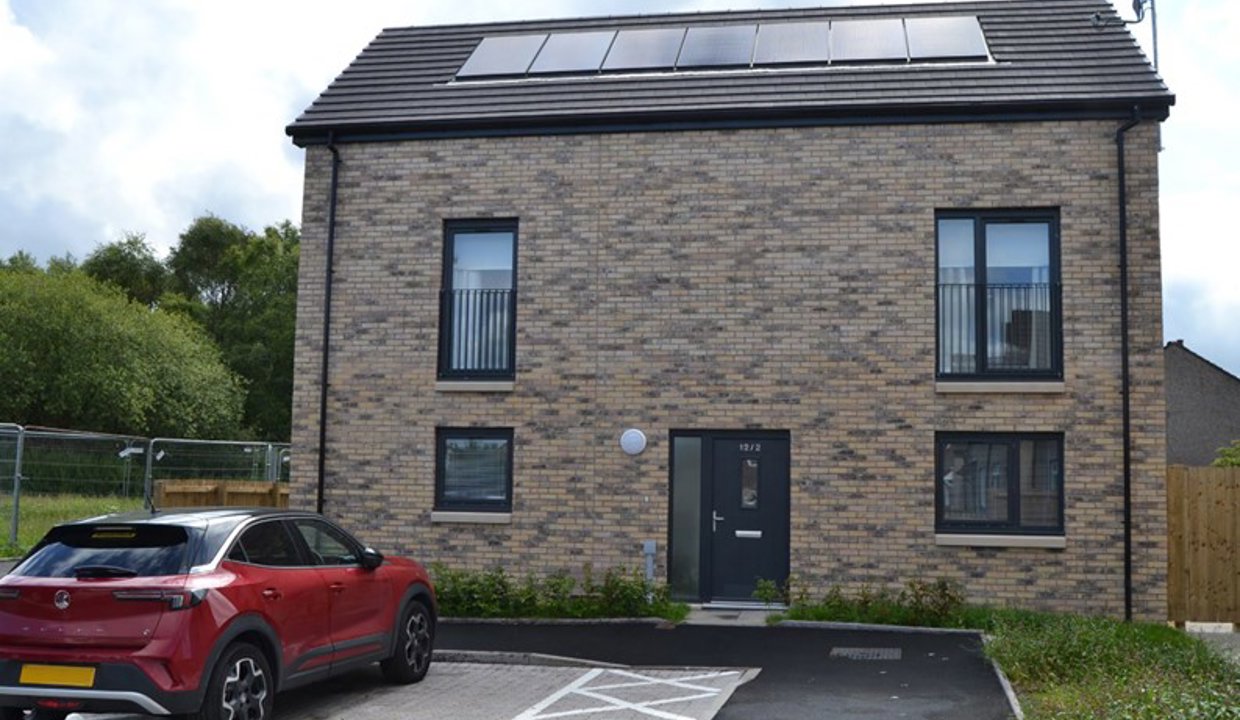
18. Older People
18.1. During 2019 the Council commissioned research together with the Health and Social Care Partnership in relation to Older People and Specialist Housing in East Dunbartonshire. The research, which was conducted with a face-to-face sample of 500 residents, indicates that around 41% of older people in East Dunbartonshire have a life limiting condition or disability. Of this overall group:
- 7% have health needs requiring aids and adaptations, which can be met through In Situ solutions or in new mainstream new build developments
- 10% have physical frailties which mean they are unable to get up and down stairs
- 5% are unable to easily access their own property due to the presence of steps. This category has a need for dedicated wheelchair options.
18.2. There is a requirement to ensure that all suitably accessible housing is provided for those most in need of it. As such, the Council has set a target of at least 10% of properties to be wheelchair and accessible housing, the target for which is aligned with that proposed in the LDP2.
18.3. Local Housing Strategy 2023-28 Priority 3 aim is ‘Supporting people to live independently and well at home’. As part of the outcomes and actions for this priority the Council will further review the wheelchair space standards in order to determine if the Housing for Varying Needs designs are sufficient to meet the needs of older people and other specialist needs groups. This has been when developing EDC’s Standard House Type, Design Guide and is being considered as part of the Authority Construction Requirements agreed for the Council’s Affordable Housing Development Programme.
18.4. The Housing Investment Team continues to liaise with EDC Occupational Therapists on general requirements and on individual specialist cases. Officers are also consulting with local HSPC representatives to understand accommodation requirements within the authority area. Joint information sharing platforms and regular meetings are planned to explore possible options for medium and long term developments which will better suit the needs of those requiring supported accommodation. This includes inter departmental reviews on existing facilities and also new sites which could form part of East Dunbartonshire’s LDP3.
18.5. Work on the new LDP (LPD3) is underway and it anticipates that there will be approximately 90 wheelchair and accessible homes for affordable housing during the next five years. Additionally, private sector developers will need to adhere to the requirement in the approved LDP2. The design of wheelchair housing will, as a minimum, meet requirements as outlined in Section 3 of the wheelchair accessible Housing Guidance.
Specific Group Provision
Bearsden
- Amenity Homes - 2
- Wheelchair Homes - 0
- Large Family Homes - 8
- 4 Bed Homes - 0.
Bishopbriggs
- Amenity Homes - 0
- Wheelchair Homes - 2
- Large Family Homes - 28
- 4 Bed Homes - 0.
Kirkintilloch
- Amenity Homes - 17
- Wheelchair Homes - 14
- Large Family Homes - 41
- 4 Bed Homes - 3.
Lennoxtown
- Amenity Homes - 0
- Wheelchair Homes - 4
- Large Family Homes - 5
- 4 Bed Homes - 0.
Lenzie
- Amenity Homes - 5
- Wheelchair Homes - 4
- Large Family Homes - 11
- 4 Bed Homes - 0.
Milngavie
- Amenity Homes - 23
- Wheelchair Homes - 0
- Large Family Homes - 39
- 4 Bed Homes - 0.
Milton of Campsie
- Amenity Homes - 2
- Wheelchair Homes - 2
- Large Family Homes - 0
- 4 Bed Homes - 0.
Torrance
- Amenity Homes - 11
- Wheelchair Homes - 0
- Large Family Homes - 16
- 4 Bed Homes - 0.
Twechar
- Amenity Homes - 0
- Wheelchair Homes - 2
- Large Family Homes - 3
- 4 Bed Homes - 1.
19. Child Poverty Action Report
19.1. The Child Poverty (Scotland) Act 2017 sets out ambitious income-based targets for reductions in child poverty across Scotland by 2030. The Act sets out four statutory targets (after all Housing costs) to be achieved by 2030:
- Less than 10% of children are in relative poverty
- Less than 5% of children are in absolute poverty
- Less than 5% of children are in combined low income and material deprivation
- Less than 5% of children are in persistent poverty.
19.2. Each local authority is required to publish an annual Local Child Poverty Action Report (LCPAR) to evidence how local actions reduce child poverty in collaboration with the Health and Social Care Partnership (HSCP). East Dunbartonshire Council and NHS Greater Glasgow and Clyde published their first LCPAR in 2019.
19.3. UK Government Official Statistics published in March 2022 outline that East Dunbartonshire was the local authority in Scotland with the lowest proportion of children aged under 16 in absolute low income at 9% and the second lowest relative proportion in relative low income at 11%. A family must have claimed Child Benefit and at least one other household benefit (UC, Tax Credit or Housing Benefit) at any point in the year to be classed as low income in these statistics.
19.4. Access to warm and affordable housing is key to tackling child poverty in East Dunbartonshire. The Scottish Government is committed to invest in delivering 110,000 more affordable energy efficient homes by 2032 under its Affordable Housing Supply Programme (AHSP). This is in line with the Council’s commitment.
19.5. The prioritisation of tackling child poverty is at the heart of the AHSP, further strengthening housing planning processes to ensure larger family homes are delivered where they are needed.
19.6. The cost-of-living crisis continues to affect our communities, presenting ongoing challenges despite our proactive efforts to address child poverty through partnerships. Work within the Community Planning Partnership is ongoing to implement various actions aimed at mitigating these adverse effects. Additionally, delivering quality family homes through the SHIP remains a crucial part of our strategy to combat child poverty.
19.7. We continue to maximise promotion of living wage, fair work and community benefit in contracts and procurement, via agreed policy and procedures.
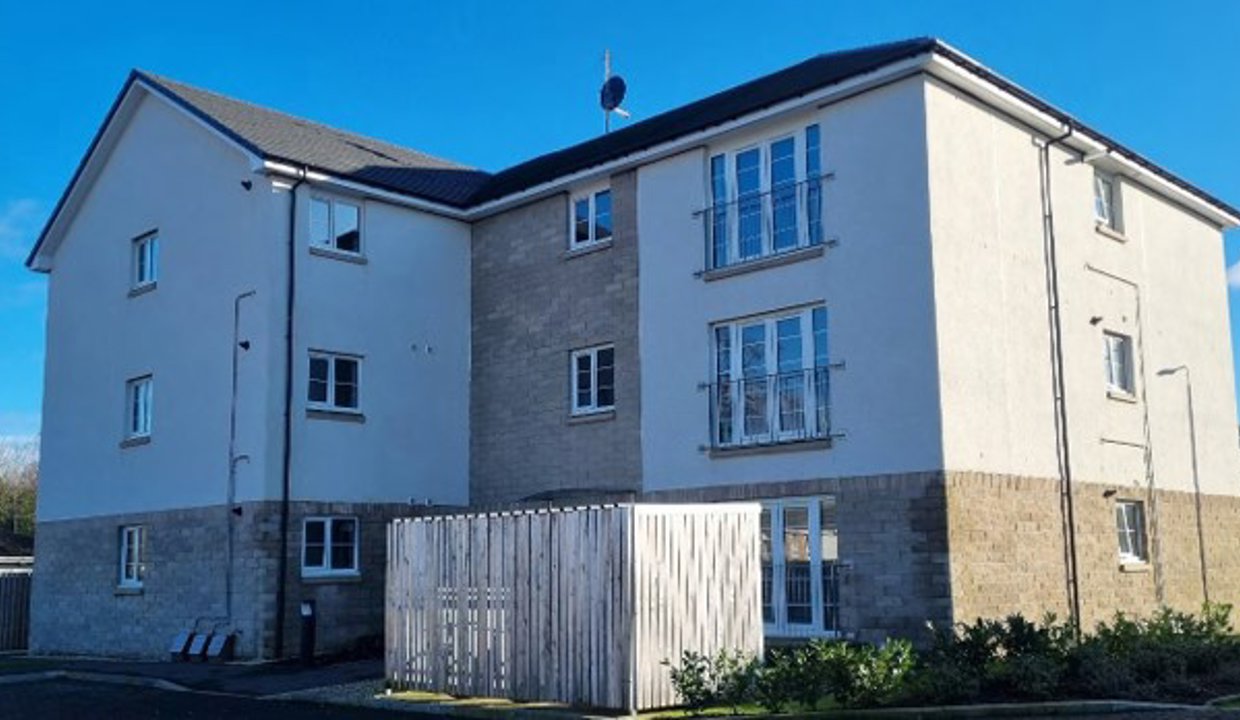
20. Affordable Housing Supply Programme Funding (AHSP)
20.1. The Scottish Government encourages local authorities to over-programme within their SHIP in order to ensure that, where slippages occur, there remains a healthy and viable stock of projects to take forward. Regional variations in the actual delivery of SHIP programmes also means that grant can be reallocated from less to more active areas to support areas of greater activity. Due to the high level of housing need and demand in East Dunbartonshire, it is essential that as many homes are built over the SHIP period as possible.
20.2. The total minimum level of Resource Planning Assumption (RPA) funding for the Council’s strategic local programme for 2025/26 is £8.665M. It is hoped that this level of funding will continue to be allocated on an annual basis during the lifetime of the SHIP or increase if possible. As has been noted the annual
Housing Supply Target (HST) for East Dunbartonshire has a target of 95 affordable housing dwellings per annum. The RPA falls short of being able to fund this. We are also advised however, to forecast for a 20% reduction year on year. This represents only a proportion of the overall projected grant requirements for this period of the SHIP and therefore there remains uncertainty in future business planning and programming.
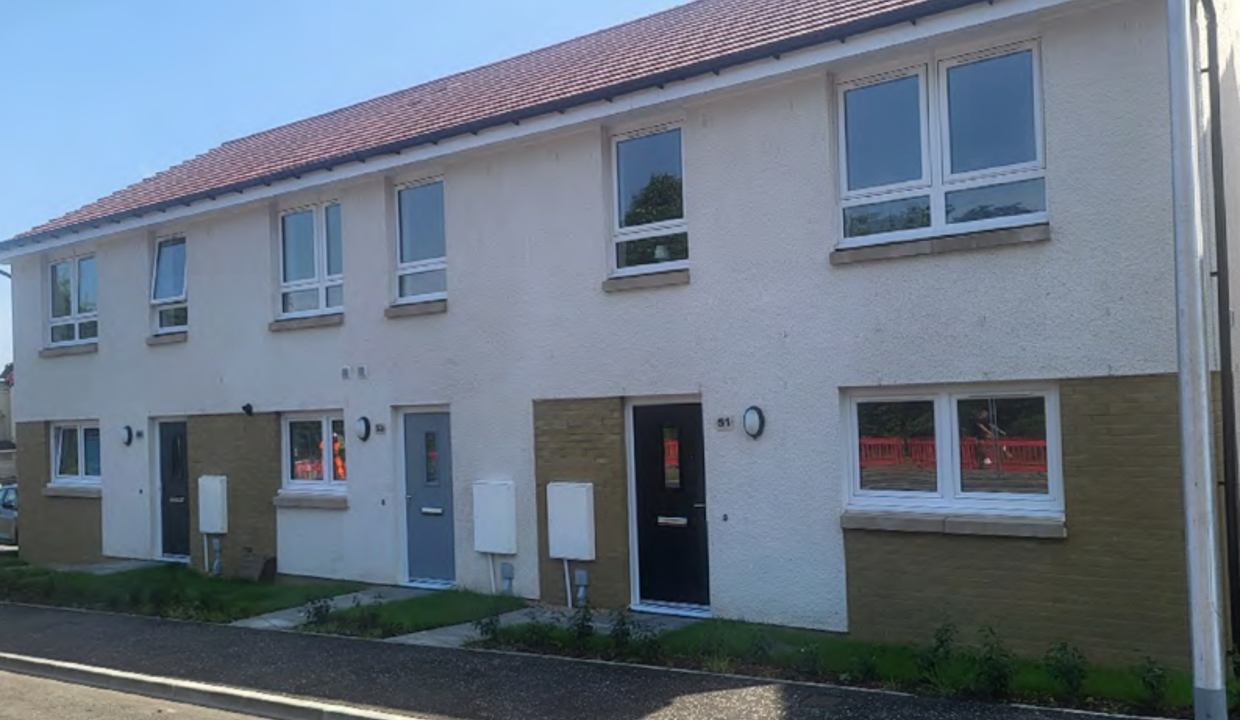
21. New Supply Targets
21.1. In total during the five-year lifetime of the SHIP, 907 potential new homes could be built, of which 876 would be houses for social rent by either the Council or a RSL and 31 for Mid Market Rent by an RSL. In addition, the SHIP targets 125 homes to be purchased on the Open Market by the Council using the Rental off the Shelf subsidy. RSLs may also use the scheme to increase the supply of social housing in the area. Hillhead Housing Association is currently participating in the scheme and hope to make three ROTS purchases during 2025/26 and may wish to continue with ROTS purchases throughout the period of the SHIP. As mentioned previously the Housing Supply Target in the LDP2 and LHS is 95 affordable units per annum. The SHIP is approximately double that. Some sites will fall into the low and medium categories and therefore may not progress.
21.2. The highest proportion of new supply is either Council Housing or RSL Social Rent. Some tenure types may change in future years given demand for intermediate housing tenures, particularly for sites which are unallocated presently or are currently categorised as being low priority. A breakdown of the projects by settlement area and tenure type is shown in Table 9 below. Note that the anticipated mix of tenure within each site may change as each site passes through the design and development process.
Table 9 - New affordable housing supply
| Locality | Council House/RSL Social Rent | Shared Equity (RSL and Council) | Mid Market Rent |
|---|---|---|---|
|
Twechar |
30 |
0 |
15 |
|
Lenzie |
77 |
0 |
0 |
|
Kirkintilloch |
413 |
0 |
16 |
|
Bearsden |
39 |
0 |
0 |
|
Bishopbriggs |
126 |
0 |
0 |
|
Milngavie |
36 |
0 |
0 |
|
Lennoxtown |
48 |
0 |
0 |
|
Torrance |
64 |
0 |
0 |
|
Milton of Campsie |
43 |
0 |
0 |
|
Rental off the Shelf - All |
140 |
0 |
0 |
|
Total |
1016 |
0 |
31 |
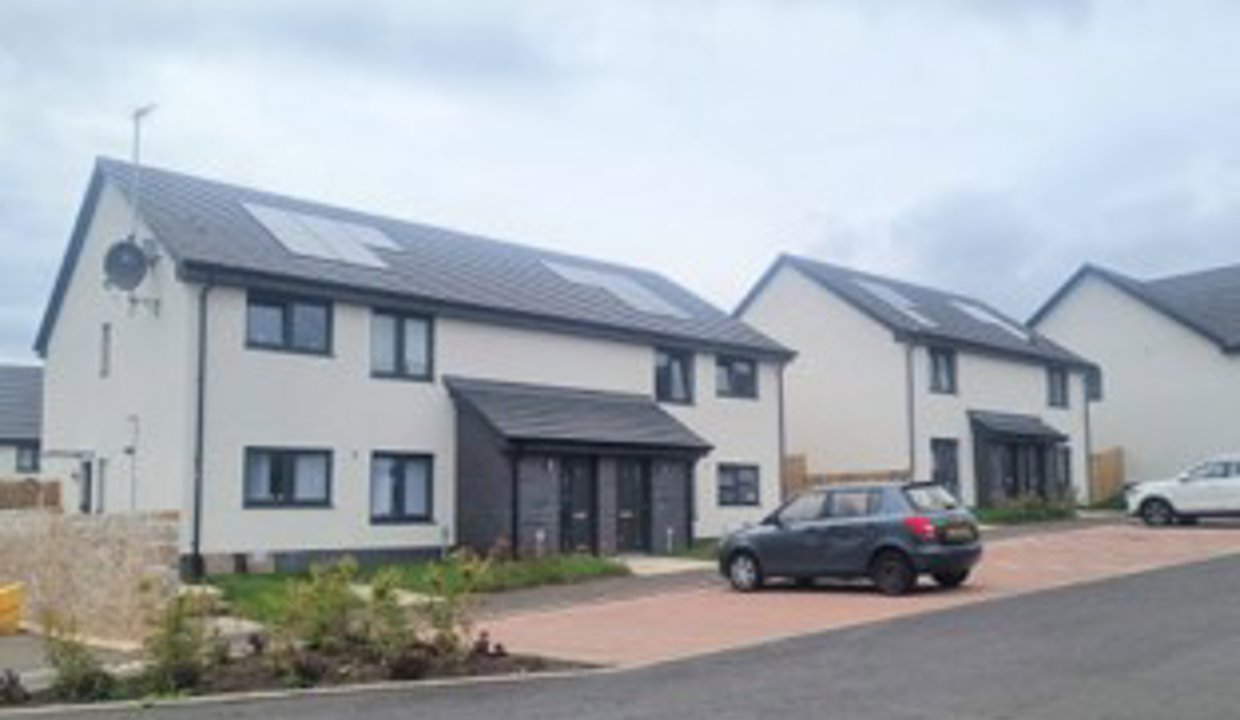
22. Consultation
22.1. In the development of the SHIP, the Council’s Development & Investment Service continues to engage with other Council Services and key partner organisations such as Housing Management, Planning, Regeneration, Social Work, Private Developers, RSLs, tenants and residents to ensure that shared priorities and their wider remits are incorporated in the SHIP. This engagement activity is carried out regularly through several forums including:
- The Tenant Participation Working Group
- RSL programme meetings
- Liaison meetings with Council development colleagues in Planning, Roads/drainage and other statutory consultees
- Meetings with developers in relation to planning submissions.
22.2. As part of the consultation process for the SHIP in 2020, the draft document was placed on the Council’s website with comments invited from a range of interested parties including local tenants and residents. A brief summary of key points identified by stakeholders included:
- Preference for future provision to comprise more family homes, particularly three bed houses compared to flats
- Support for intermediate housing options in addition to social rented provision, especially Low-Cost Housing to buy and Shared Equity
- Agreement that amenity housing provision should include particular features to assist vulnerable tenants, principally level access or lift access to all front doors and accessible showers
- Endorsement of the promotion of energy efficiency standards to help reduce fuel poverty and meet climate change, including passivhaus housing standards
- Support for future housing provision to meet minimum size requirements.
The comments above have been taken into consideration and we are actively using them to inform our AHIP2. We have had stakeholder workshops including HSCP to inform our Design Guide and Construction Requirements for the new programme.
22.3. In preparation and to inform the new LHS 2023- 28, there has been extensive consultation and engagement with all stakeholders. This included an early engagement survey, stakeholder conference and option identification and appraisal workshops.
22.4. We had one collective group meetings with the RSLs in East Dunbartonshire in September 2023 since Covid 19. This is a way to continually consult and collaborate on affordable housing delivery and best practise. We plan to meet with the RSLs over the next few months to discuss future plans for delivery in the area and hope to make these more regular meetings.
23. Equalities and Strategic Environmental Assessment
23.1. In line with The Equality Act 2010, an Equalities Impact Assessment has been prepared in conjunction with the SHIP.
23.2. The aim of the Equalities Impact Assessment is to identify the likely or actual effects of this Strategic Housing Investment Plan on residents and stakeholders. This includes identifying any aspect of the SHIP that could indirectly, intentionally or unintentionally discriminate against the users of our services or our staff. Where there are any potential negative impacts identified, action will be taken to eliminate or mitigate these negative impacts.
23.3. Additionally, a Strategic Environmental Assessment has been carried out on the SHIP. This involved undertaking a pre-screening assessment of the SHIP in accordance with Schedule 2 of the Environmental Assessment (Scotland) Act 2005. The pre-screening found that the SHIP itself is considered to have no or minimal environmental impacts, but further consideration would be given to the LHS and Local Development Plans in relation to new development.
24. Monitoring Arrangements
24.1. The key to delivering successful projects and to maximise the provision of affordable housing is through effective partnership working between a range of skilled agencies and organisations. Securing the necessary additional funding is fundamental if the SHIP is to be delivered successfully. It is equally essential that commitment is made to the monitoring and management of that funding as forecast project delivery programmes develop. .
24.2. The LHS is reviewed annually and any progress towards delivering the LHS priorities is presented to Committee. Since the implementation of the LHS there has been significant progress towards delivering on Priority 1 in relation to the delivery of affordable housing. The Council has regular discussions with RSLs operating in the local authority area which has helped deliver on the key actions of Priority 1.
24.3. Should additional funding be made available and/or new projects are brought forward, discussion will take place with the Council and the Scottish Government to agree funding of the projects. All new projects will be assessed against the Council’s prioritisation methodology.
24.4. Progress on the delivery of affordable housing will be assessed against the range of actions against the LHS outcomes and SHIP investment programme. The results will be used to update the LHS and succeeding years SHIP programme as appropriate.
25. Prioritisation of Projects
25.1. It is essential that the SHIP maximises the provision of affordable housing to meet the high level of housing need. Although housing need and demand primarily can be met through the provision of social rented accommodation, some intermediate tenures may contribute to meeting housing need. The Council has carried out an analysis of potential projects and assessed them accordingly. A number of factors are taken into account including compliance with LHS and LDP objectives, and deliverability. The scoring criteria is subject to regular review.
25.2. Each project has been prioritised according to the methodology attached as Appendix 1. The prioritisation outcome for each project can be found at Table 10 below.
Table 10 - East Dunbartonshire Affordable Housing Projects – 2026/27 – 2031/32
